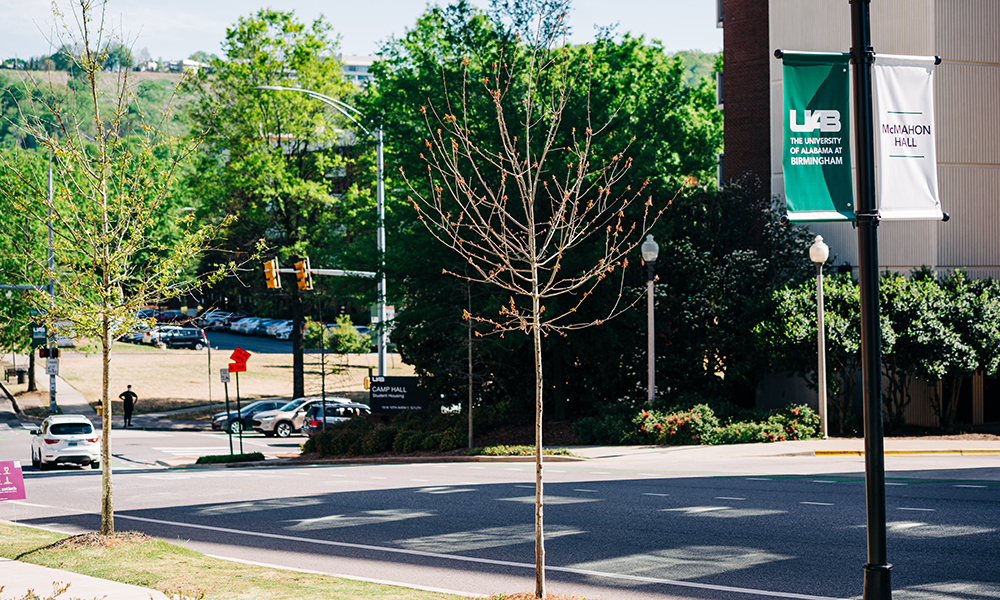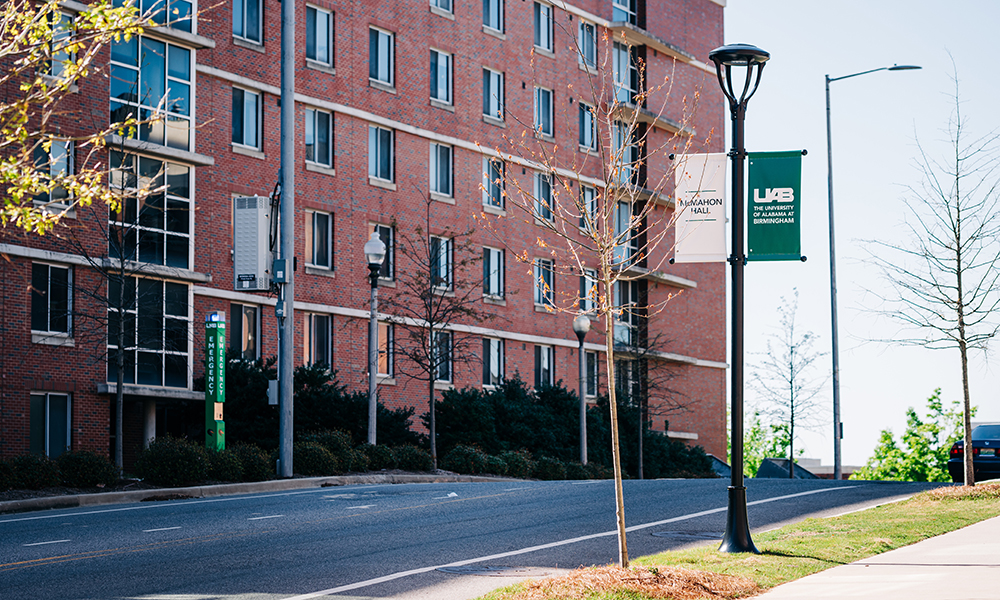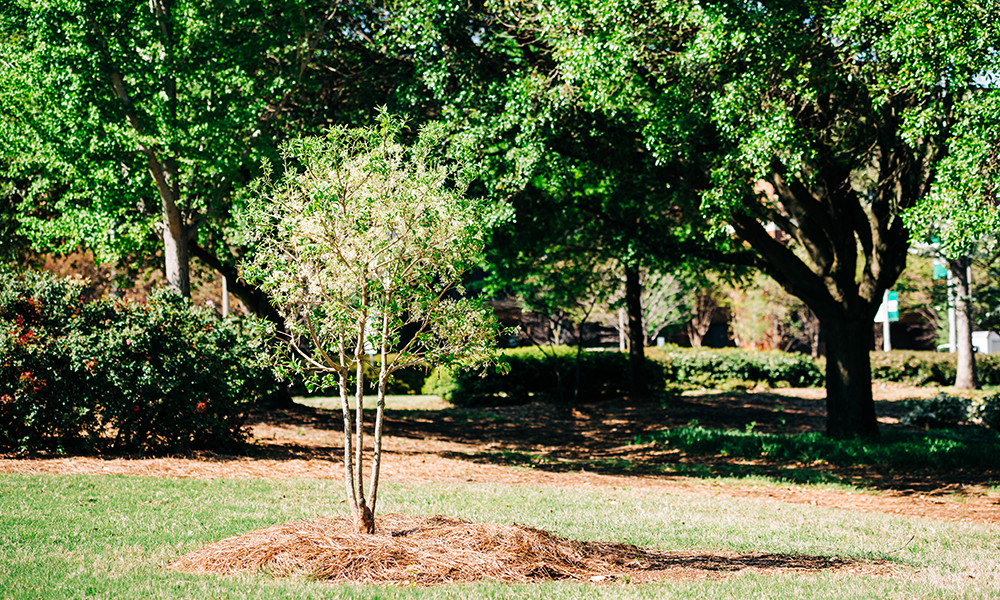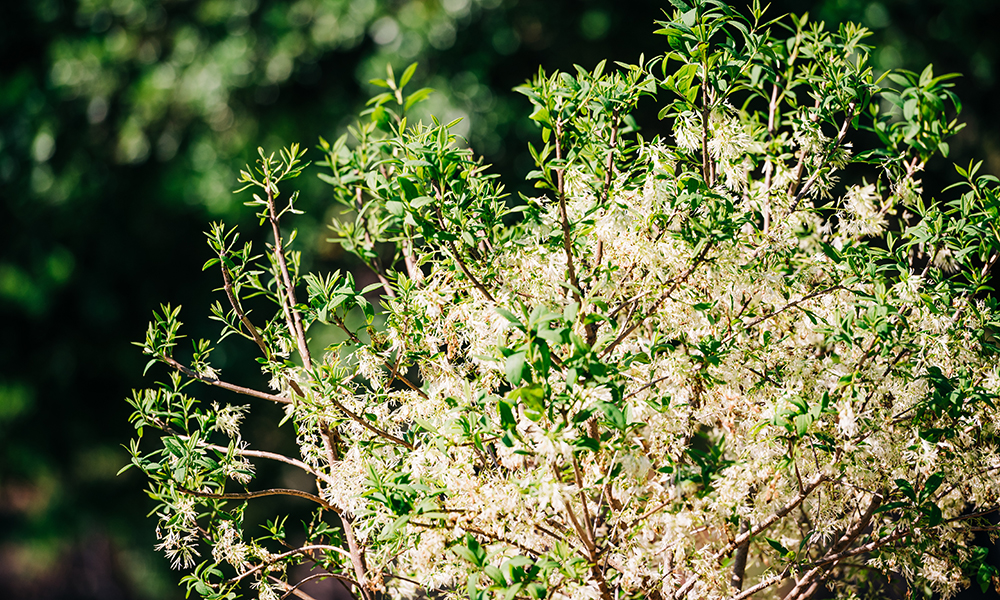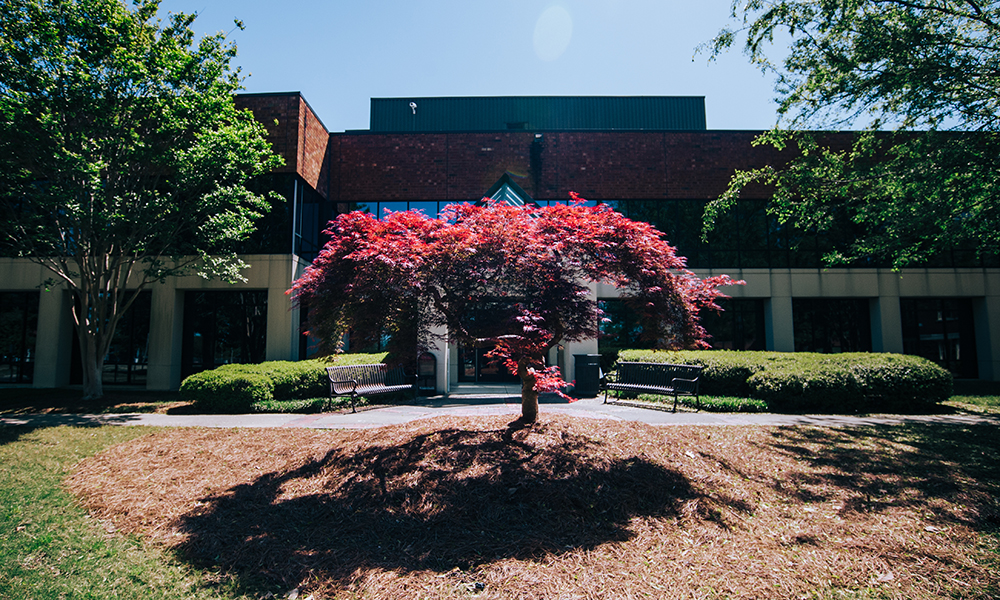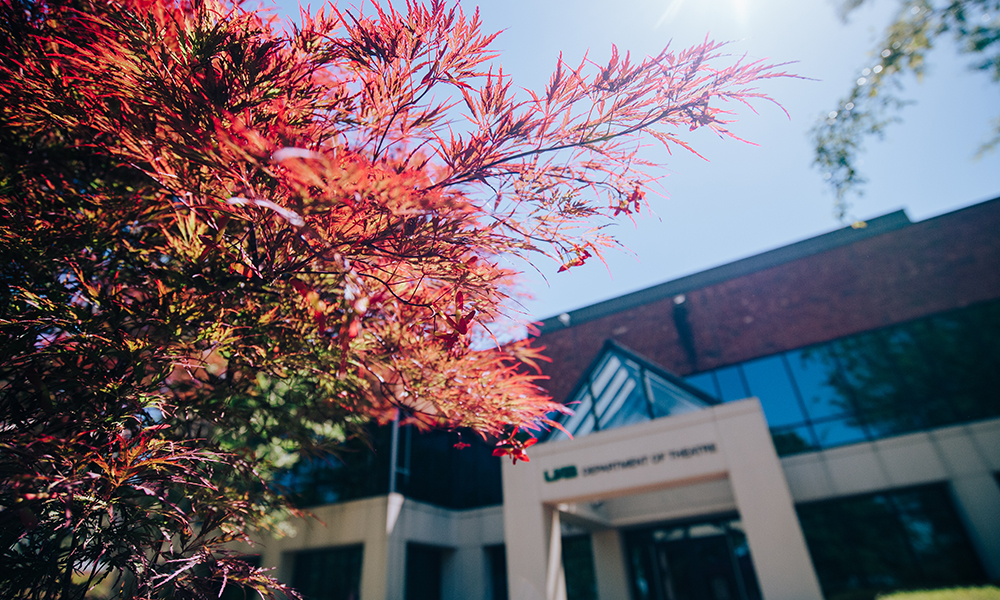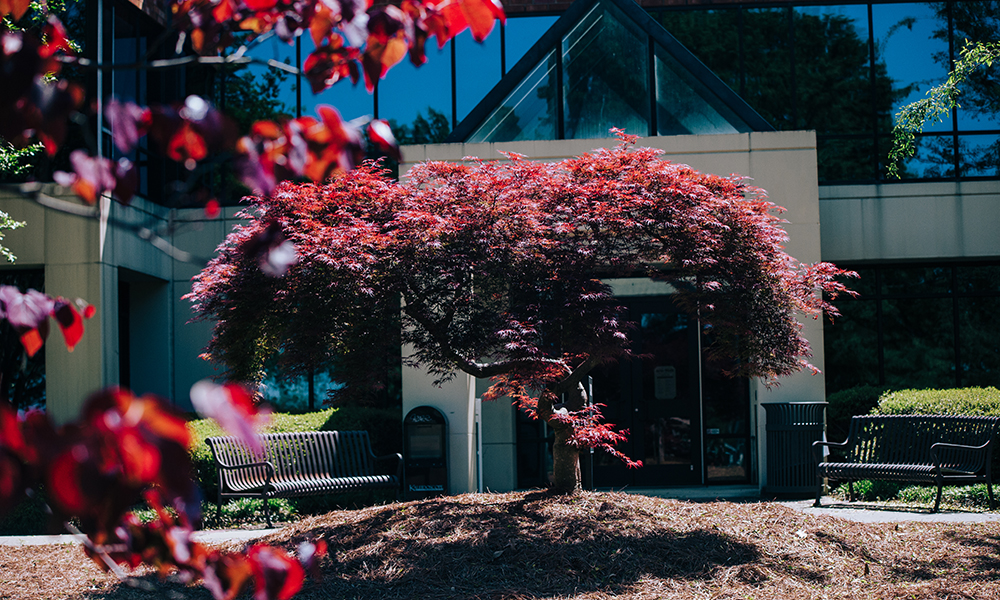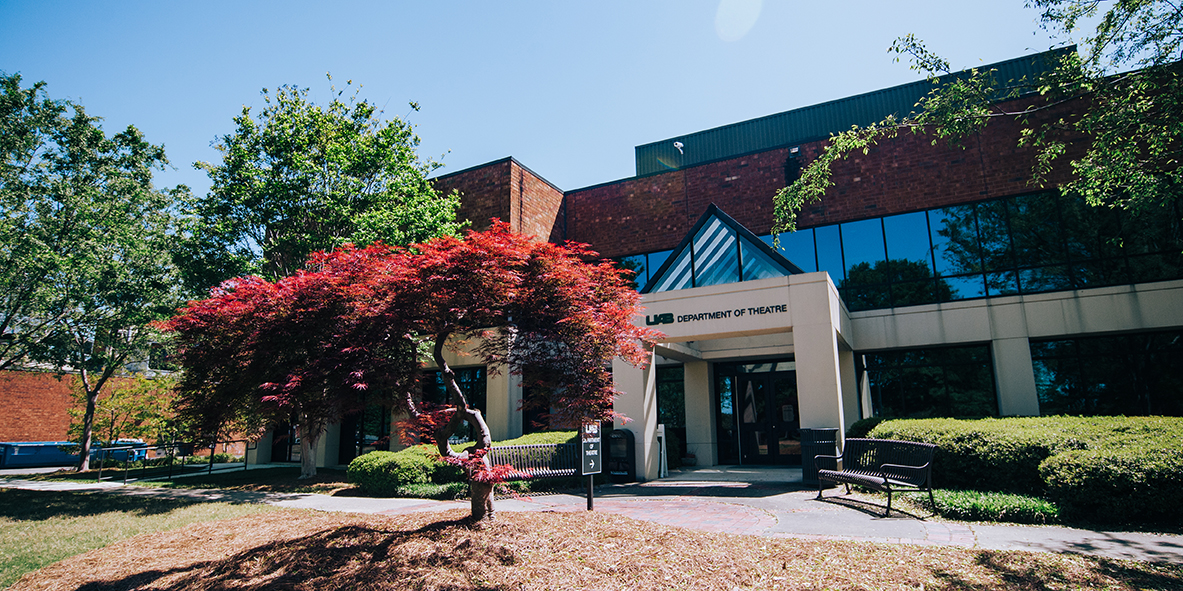
A 50-year-old Japanese maple recently has been relocated successfully from the Humanities Building to the Alys Stephens Center for the Performing Arts, ensuring its continued growth as construction continues on the Science and Engineering Center. LEXI COON / University Relations
For the eighth year, UAB is recognized by the National Arbor Day Foundation as a Tree Campus USA for its work to nurture more than 4,400 healthy trees and engage students and employees in conservation.
UAB also was honored for the third time with a Tree Campus Healthcare designation, which recognizes health institutions that make a mission-aligned impact on community wellness through tree education, investment and community engagement.
“Once again, UAB continues to demonstrate our shared value of stewardship through our commitment to preserving one of our greatest campus resources, our trees,” said Bambi Ingram, manager of UAB Sustainability. “Trees reduce air pollution, recycle water and beautify our campus, giving students shade on sunny days and bursting into bold colors in the fall. Preserving our urban forest is an important part of what makes UAB such a special place.”
|
“Once again, UAB continues to demonstrate our shared value of stewardship through our commitment to preserving one of our greatest campus resources, our trees." |
UAB is dedicated to preserving tree growth on campus, while accommodating campus construction. The UAB Facilities Division created a process to evaluate the trees and estimate the value of their contributions to the campus ecosystem; if a tree or group of trees must be removed during construction, new trees that provide similar contributions must be planted at the site or the equivalent dollar amount added to the Lynne and Tim Sullivan Tree Fund, renamed in 2020 for retired UAB Facilities employee Tim Sullivan and his wife, Lynne. The Tree Fund supports the management of UAB’s urban forest.
Meet campus’s newest trees
Within the past year, UAB Facilities Director of Support Services Scott Moran says money given to the fund has been used, for the second year in a row, to have many of UAB’s live oak trees pruned, as well as provide special treatments to several other campus trees to alleviate soil compaction and stop invading pests and fungi.
“Contributions to the Tree Fund are crucial in helping UAB care for and preserve our campus trees so they can continue to grow and thrive for years to come,” Moran said.
Additionally, Tree Fund dollars were allocated to continue to increase UAB’s plantings across campus to further promote clean air and sustainable practices. Some of the campus’s most recently added trees include a Grancy Greybeard and two new live oaks in the Mini Park, a laurel oak at Bartow Arena, a nuttall oak beside McMahon Hall along 16th Street South, three willow oaks along the University Boulevard median between Campbell Hall and the Mini Park, another willow oak at the ROTC Building, and two Japanese maples at the Women and Infants Center.
Click through the slideshow below using the thumbnails to see some of campus’s newest trees.
-
A nuttall oak was planted beside McMahon Hall along 16th Street South with dollars from the Tree Fund. ANDREA MABRY / University Relations
-
A nuttall oak was planted beside McMahon Hall along 16th Street South with dollars from the Tree Fund. ANDREA MABRY / University Relations
-
A Grancy Greybeard flowering tree was added to the collection of trees at the Mini Park, made possible by dollars from the Tree Fund. ANDREA MABRY / University Relations
-
A Grancy Greybeard flowering tree was added to the collection of trees at the Mini Park, made possible by dollars from the Tree Fund. ANDREA MABRY / University Relations
Continuing the legacy
Also using dollars from the UAB Tree Fund, a 50-year-old Japanese maple recently has been relocated successfully from the Humanities Building to the Alys Stephens Center for the Performing Arts, ensuring its continued growth as construction continues on the Science and Engineering Center.
|
The Lynne and Tim Sullivan Tree Fund helps to maintain tree diversity, replace damaged or diseased trees and add to the tree population on campus. Give today at go.uab.edu/giveSullivanTreeFund. |
David Lovell, grounds manager for UAB Facilities, says the tree likely was planted when the Education Building was erected in 1972 as Building No. 3, one of the first buildings constructed, rather than acquired, for the UAB campus. Facilities classifies the Japanese maple as a legacy tree, a term used at UAB typically to mean a tree that is 45-plus years old and either existed before the UAB campus or was planted intentionally to create the campus; other legacy trees include the Mini Park live oaks and other Japanese maples on campus, including one at the Alumni House, relocated from the demolished Education Building in 2021, plus Blount and Rast halls and Ryals Public Health Building, with more at the Woodward House.
“Moving these trees honors the combined history of the Grounds Department, and also our sister department, Campus Services,” Lovell explained. “Without Campus Services’ help, digging and transplanting the trees would not have been possible. I have no doubt that the Grounds Department planted these trees originally, and by saving these trees, we honor our current employees and our legacy of dedicated employees from days gone by. Their combined contribution lives on in these trees and will be a constant living reminder of their hard work and care for our university.”
Facilities also relocated a Bloodgood Japanese maple this month from near the 801 Building to Honors Hall, hoping it can thrive more successfully in its new location. Lovell explains that, while it’s a bit late in the season for tree transplantation, his team felt they had to try.
“Its red leaves are striking against the backdrop of the white building,” he said. “The completion of this move makes the third Japanese maple we’ve successfully transplanted since January 2021. I’m so proud of my staff and the teamwork with Campus Services on these challenging and truly rewarding projects.”
-
A 50-year-old Japanese maple recently has been relocated successfully from the Humanities Building to the Alys Stephens Center for the Performing Arts. LEXI COON / University Relations
-
A 50-year-old Japanese maple recently has been relocated successfully from the Humanities Building to the Alys Stephens Center for the Performing Arts. LEXI COON / University Relations
-
A 50-year-old Japanese maple recently has been relocated successfully from the Humanities Building to the Alys Stephens Center for the Performing Arts. LEXI COON / University Relations
Going green
Can you really put a dollar value on a tree? Yes, says Bambi Ingram, UAB Sustainability coordinator. There are costs you would have to bear if trees weren’t here to do the work for you. For example, throughout the course of 50 years, a single tree can generate $31,250 worth of air pollution control, recycle $38,000 worth of water and provide $31,500 worth of soil erosion-control. UAB’s trees have provided $125 million worth of air-pollution control and $126 million in soil-erosion control and have recycled at least $152 million worth of water.
As part of the inventory of UAB’s 4,400-plus trees, each one has been assessed for value, based on age and location. Use this specialized Google Map, created by the UAB Reporter, to find the most treasured trees on campus.
UAB was first designated a Tree Campus USA in 2015 for its accomplishments in 2014; the certification must be renewed annually.

